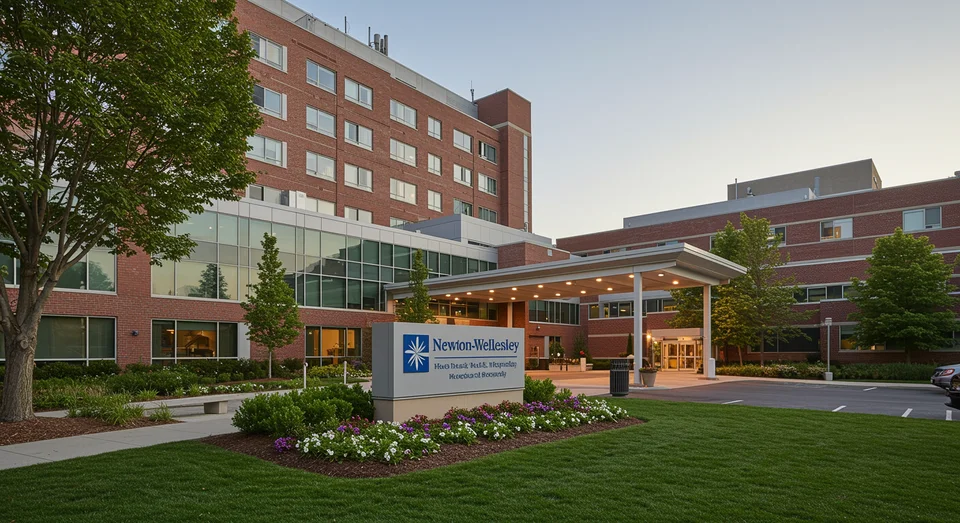Brain Tumor Cluster Sparks Investigation at Newton-Wellesley Hospitals Maternal Care Unit
231 views
Six employees at Newton-Wellesley Hospital, nestled in the Boston suburbs, have been diagnosed with benign brain tumors, sparking concerns and an unfolding investigation into potential occupational hazards. All six individuals worked on the fifth floor of the hospital, a space dedicated to maternal care, raising questions about whether their shared environment could be linked to these rare medical developments. While the hospital’s Department of Occupational Health and Safety has conducted extensive tests and found no evidence of environmental risks, the mystery remains unsolved, leaving both staff and the broader community searching for answers.

A Quiet Alarm: Navigating the Unknowns of Workplace Health
The diagnosis of six benign brain tumors among employees of Newton-Wellesley Hospital has stirred a quiet but palpable unease, not only within the hospital’s walls but across the healthcare community. These tumors, though non-cancerous, are far from insignificant; their presence raises questions about the safety of the workplace and the potential factors that could contribute to such a cluster. For those who have dedicated their careers to caring for others, the irony of falling ill in their own professional environment is both unsettling and deeply personal.
The hospital’s Department of Occupational Health and Safety has taken swift action, launching an investigation that has already ruled out several key environmental concerns. Air quality tests on the fifth floor revealed normal conditions, with only slightly elevated levels of volatile organic compounds—substances commonly found in cleaning products and other everyday materials. Further evaluations of radiation levels, ventilation systems, and even the use of masks have yielded no evidence of harm. Yet, despite the thoroughness of these tests, the absence of definitive answers only amplifies the sense of uncertainty.
Adding another layer to the investigation, the Massachusetts Nurses Association has stepped in to conduct its own independent inquiry. The union is delving into the medical records of affected nurses, seeking patterns or commonalities that might shed light on the situation. Their involvement underscores the critical importance of transparency and accountability, particularly in a profession where workers are often exposed to unique health risks. For the nurses and other staff members who spend countless hours in the hospital, the assurance of a safe working environment is not just a matter of policy; it is a matter of trust.
The fifth floor of Newton-Wellesley Hospital, home to maternal care facilities, has long been a space of joy and new beginnings. It is where life enters the world and families are formed. To imagine that such a setting could harbor unseen risks feels incongruous, almost surreal. Yet the cluster of brain tumors forces a reconsideration of what might lie beneath the surface of even the most seemingly benign environments. Could there be an unknown factor at play, something that eludes current scientific understanding? Or is this an unfortunate coincidence, a statistical anomaly that defies explanation?
In broader terms, this situation serves as a reminder of the complexities inherent in occupational health. Healthcare workers, by the nature of their jobs, are often exposed to various substances and conditions that could pose risks over time. While the immediate focus remains on the fifth floor of Newton-Wellesley Hospital, the issue raises larger questions about how workplace safety is monitored and addressed, particularly in environments where the stakes are so high. The intersection of medicine, science, and occupational health is fraught with challenges, but it is also an area ripe for innovation and improvement.
As the investigations continue, the affected employees and their families are left navigating the emotional and physical toll of their diagnoses. The benign nature of their tumors offers some solace, but it does not erase the fear or uncertainty that comes with such a diagnosis. For the hospital community, the hope is that answers will emerge—answers that can provide clarity and, perhaps, prevent future occurrences.
In the absence of definitive conclusions, the story of Newton-Wellesley Hospital serves as both a cautionary tale and a call to action. It highlights the importance of vigilance, the need for rigorous scientific inquiry, and the value of collaboration between institutions and unions. Above all, it underscores the human element at the heart of healthcare: the people who dedicate their lives to healing others, and who deserve a safe and healthy environment in return.
